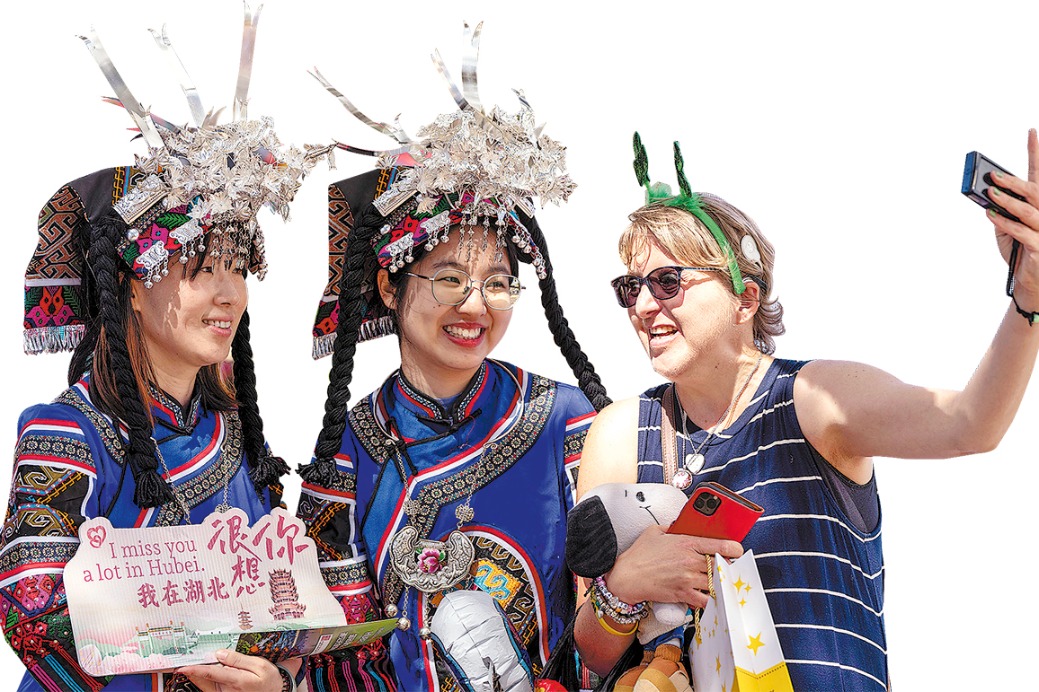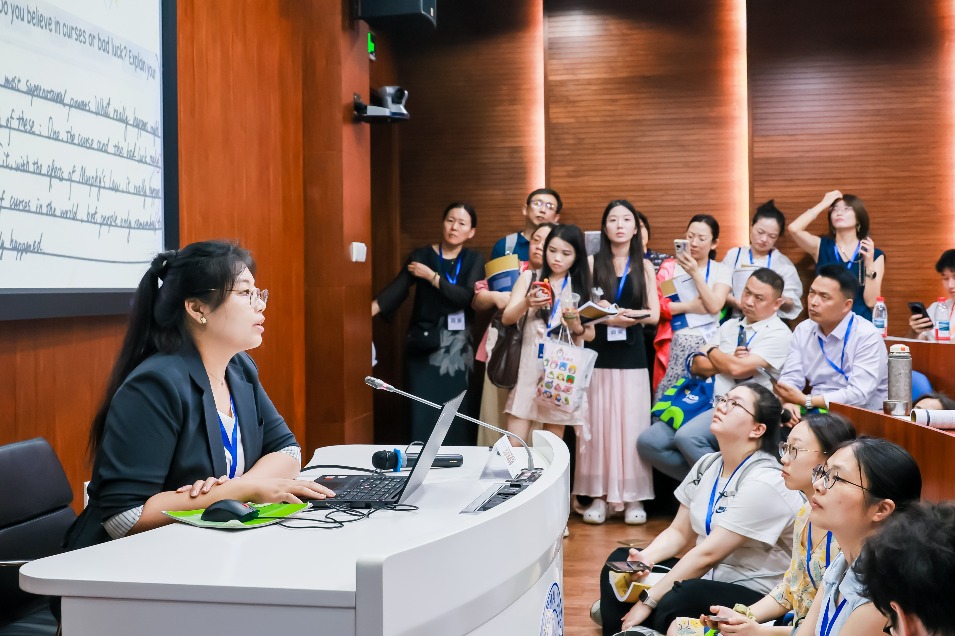DEVELOPING VILLAGES
Photographer undertakes odyssey to record and preserve a world that's slowly disappearing, report Yang Feiyue in Beijing and Zhu Youfang in Changsha.

Tan Jianhua has trekked to more than 800 ancient villages over the past 15 years, an odyssey made all the more difficult by his carrying a heavy bag every step of the way.
The bag is the key to the endeavor. It contained kit that has enabled him to take 100,000 photographs on his journey that have captured the natural landscape, distinctive architecture, folk customs and historical landmarks of the hidden rural jewels that are scattered across Central China's Hunan province.
Some of the scenery captured by Tan's lens has since vanished, giving his work an unexpected historical value, experts say.
Tan, in his early 70s, was a professional photographer for the Chinese and Overseas Architecture journal based in the provincial capital Changsha.
Despite being well-versed in the various styles, schools and theories of architectural design, it wasn't until Tan was in the home stretch of his career at the journal that he realized the most beautiful rural structures were those that had been around him throughout his early years.
"The bridges, running water and houses, just like those in a drama from the Yuan Dynasty (1271-1368)," Tan says. "They are all a picture."
Some ancient architecture in the south and east of Hunan features horse-head walls, and a row of rooms anchored by a central space, while those in the west are mostly wood structures with ethnic Tujia, Miao and Dong elements.
"They all constitute the diversity of architecture in Hunan; the features differ from other provinces," Tan says.
As he realized that rapid urbanization was eating into the space of many rural structures, an urge rose in him to keep a record of the ancient villages, especially on the brink of change incurred by modern development.
Tan attributed the urge to his worship of and nostalgia toward the soil.
"I was born a rural child, and I have special feelings for those villages and old houses," Tan says.
"My first memory came from the countryside," he adds.
In 2006, Tan decided to explore, find and record such villages, through his lens, in the depths of the mountains.
However, he was already off to a rough start. Those villages mostly sit in the middle of nowhere and are far away from the city and Tan didn't have a car, instead having to rely on buses and motorcycles.
He would often set up a tent in the woods, or borrow straw mats from local villagers to sleep on in their ancestral halls, and most meals consisted of instant noodles.
Yet, all the hardships melted away when he would feast his eyes on the beauty of the ancient villages and their buildings.
"They have a poetic aesthetic and are a concrete image of Hunan culture," Tan says.
"Photography can accentuate this, and retain the beauty of Chinese culture that has been inherited for thousands of years."
During his journey, Tan also did his part to call attention to the preservation of rural buildings.
In 2006, Tan zoomed in on Jinshou Hall, an administrative site of the Communist Party of China used during the early 1930s, in Chudong village of Liuyang city, east of Hunan.
He spent a week in the village, recording rural life while raising awareness and appreciation of the hall, which was the biggest and best preserved traditional residence of its kind in the area.
It is a courtyard-style cluster of folk architecture that was built in 1897 and covers an area of more than 5,000 square meters.
Tan is relieved that the hall has been well-preserved over the years and that, since 2008, when the third national cultural relic survey took place, its artistic value and historical significance have been recognized.
He has made annual trips to Chudong village over the years to experience its positive changes.
"The village environment is getting better, and local life is improving," he says.
During his 2010 trip to Ningyuan county, Yongzhou city, in the south of Hunan, Tan wasted no time in pointing out a big crack in the wall of an old building to local authorities.
"I told them it would fall to pieces if restoration work was not carried out, which would be a great pity," Tan says.
"When I came back a few years later, the crack was fixed."
The building has become a provincial cultural relic for its characteristics, which are typical of rural households that engaged in small-scale farming work in southern China.
Another vital element of Tan's work is taking portraits of villagers in old age.
He found that many senior people are in need of a photo for their funerals, so he makes a point of asking village officials to invite the elderly, usually those aged 80 or above, to get a free portrait photo.
"When I was a child, my mother told me it was not easy to bring me into the world," Tan says. "She said that whatever I do, it should contribute something to the society."
Therefore, Tan considers it a good deed to use his camera to fulfill the need of the elderly in those rural areas. "I'll print and mail their portraits to them for free," he says.
Over the past decade, Tan has mailed more than 3,000 photos. He takes pride in the fact that the photos have made their way to many old houses in the villages.
In Tan's opinion, the human element is an indispensable part of rural beauty, in addition to the natural landscape.
Tan still vividly remembers a scene where elderly villagers would smoke tobacco from a long-stemmed pipe around a fire pit during winter in Suining county of Shaoyang city in the central area of Hunan. "It was a magical sight, but many of the elderly are now gone," Tan says.
"Things like that are disappearing too fast, and are inimitable and extremely valuable," Tan says, adding that he has to act more quickly in the fight against the time to create more photos, words and films.
At the moment, a selection of Tan's work has been displayed at the Cradle of Hunan Soul exhibition in Changsha.
The show presents more than 130 works that include Tan's photography, as well as calligraphy and paintings by other local artists, and will run until mid-September.
Visitor Li Xiaoqian was impressed by Tan's work when she went to see the exhibition with her sister at the end of last month.
"I want to visit these villages after seeing them in the photographs," the 32-year-old Changsha resident says.
She says she didn't know much about the ancient villages in Hunan and was surprised to find them full of distinctive cultural elements.
Explaining the purpose of the exhibition, Tan says: "Ancient villages are cradles of local culture in Hunan, and we want the exhibition to show and promote the poetic living environment and profound cultural heritage of Hunan's ancient villages."
The goal is to "enrich the historical and cultural connotations of Hunan, and discover and explore more tourism and cultural resources in the province", he adds.
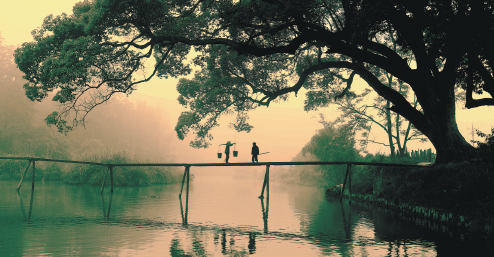
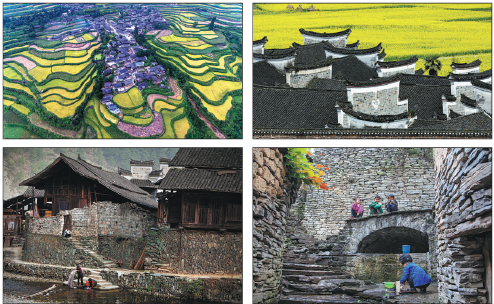
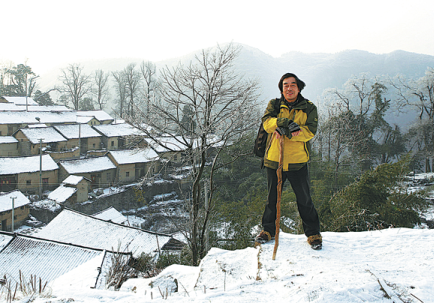
Today's Top News
- Xi's book on governance hailed for insights into 'China miracle'
- European destinations swamped by tourists
- Economy expected to maintain steady pace
- Stable, healthy Sino-US ties benefit all
- CPC plenum to focus on next five-year plan
- Talks highlight the fact that cooperation benefits both sides, confrontation harms both
















